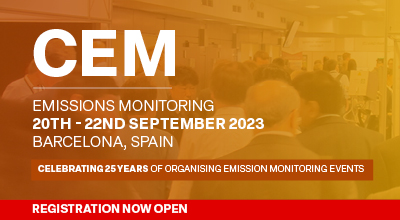| Abstract Title: | Application in Renewable Energies field : odor online monitoring in methanization process |
| Presenter Name: | Mr Louis VIVOLA |
| Co-authors: | Mr Sebastien CUEILLENS |
| Company/Organisation: | CHROMATOTEC |
| Country: | France |
Abstract Information :
When odor issues occur at an industrial site, rapid diagnosis must be done and a strategy defined to treat odor sources definitively. Today, the sensory panel approach using dynamic olfactometry analysis is considered as first approach to rank odor sources and subsequently to treat the most noxious odors. When investigating the source of the odor, an online monitoring system provides for the best available methodology. Conventional electronic nose (e-nose) technologies are designed to check odor variation and try to correlate results with a sensory approach (e.g., dynamic olfactometry using EN 13725 or ASTM 679-E04 methods). These approaches, however, have limitations since the current e-nose solutions do not provide the gas composition via speciation and require the use of technologies that are highly susceptible to interference. Manual sampling techniques are susceptible to additional loses of sample because the molecules are often lost during sampling and transport of samples to the laboratory for analysis. Therefore, the need for online analyzers able to monitor onsite odors constituents such as Volatile Organic Compounds (VOCs), sulfurs, and nitrogenous compounds is apparent.
In response to this need, Chromatotec has developed a solution for the online analysis of VOCs, sulfurs, and NH3. This solution redefines the capability with online monitoring specifically suited for the 'odor' monitoring industry. Chromatotec solutions provide the ability to quantify concentrations in parts per billion (ppb) or parts per trillion (ppt) in ambient air and process applications.
The deployment of this solution have been conducted on a reference industrial site in the South West of France. A recovery center which collects domestic waste from 200,000 citizens and converts it to compost, solid recovered fuel and biogas by utilizing methanization process. The site treats 84,000 tons of waste and produces 30,000 tons of compost per year. It covers over three acres with 0.25 acres dedicated to air treatment.
The vigiODOR solution is developed for online monitoring and modeling of the site contribution of the olfactory impact of the site, which allows for site mitigation procedures to treat and prevent odors. Odor events are better understood by using a scientific approach to determine sulfurs composition, VOCs concentration, and odor concentration measured according to EN13725. The measurement system performance evaluation is completed using the internal calibration (permeation tube) feature of the system, providing the correlation with olfactory response, field measurements, and impact forecasts. Spot measurement can be integrated into the online measurement cycle to demonstrate compliance with the odor concentration objectives defined in the French composting regulations (5 ouE/m3 not to be exceeded more than 175h per year (2% of time) in residential areas).
The vigiODOR solution is the comprehensive odor monitoring system incorporating a multiplexer (stream selector) that automatically collects process gas from three odor control systems: bio filtration, charcoal filters, and waste reception area.
The vigi e-nose analyzer monitors 14 specific sulfurs such as H2S, Mercaptans, sulfides such as DMS DMDS, SO2. In addition, the solution monitors VOCs producing data specific to odor intensity and concentrations measured locally in accordance with EN 13725. Concentrations are tracked at ppb or ppt levels, all lower than what the human nose can detect.
To evaluate the chemical and odor impact of the source on the neighborhood, the topography, meteo, and concentrations monitored by the analyzer are input into a specific dispersion modelling software.

